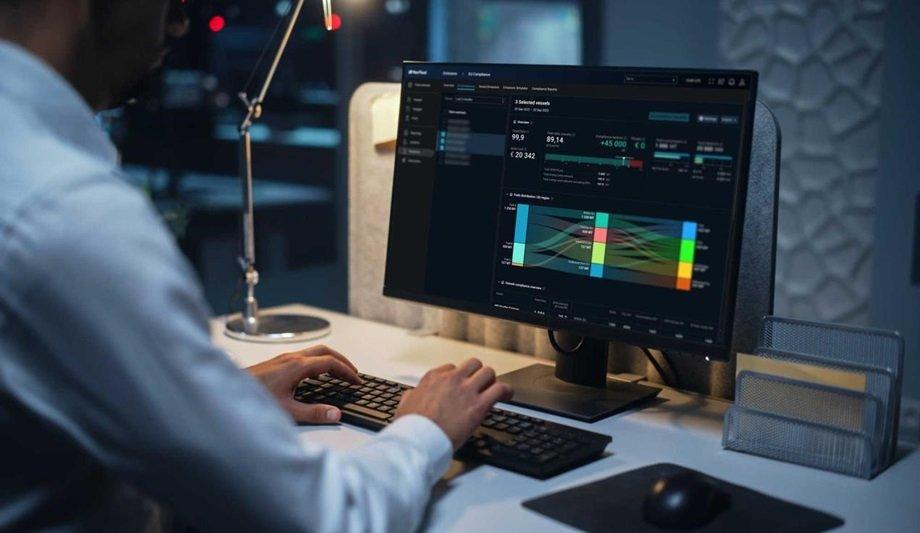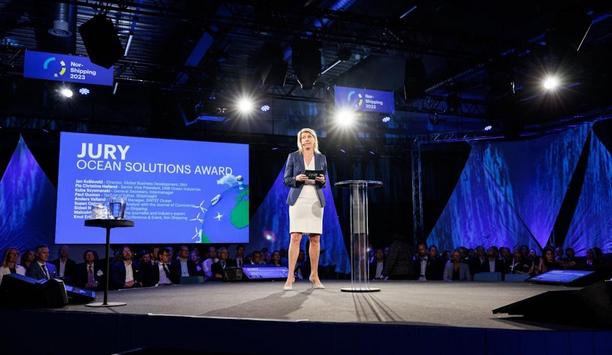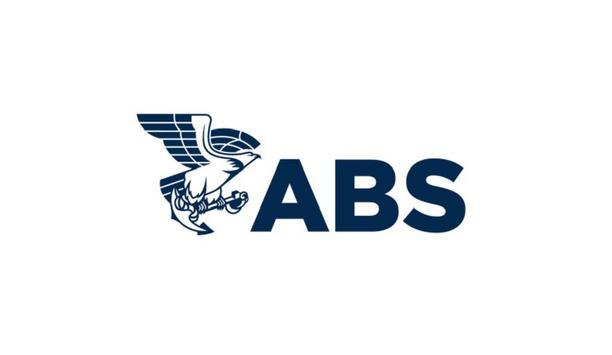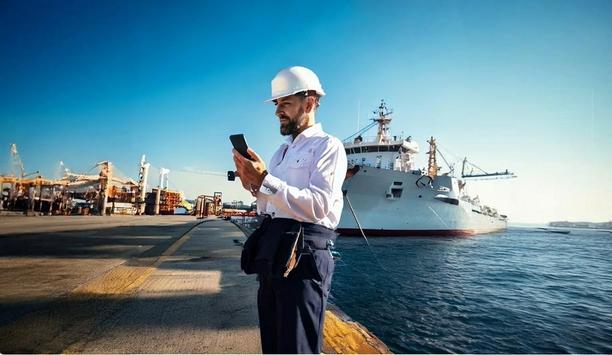NAVTOR Founder and CEO Tor Svanes is somewhat of a legend within e-navigation and maritime technology.
With close to six decades of expertise to draw on, and a track record of launching industry-defining innovations, his understanding of past, present, and future developments is second to none. So, what does he think awaits on the horizon as we sail into 2025, and beyond?
FuelEU Maritime
“FuelEU Maritime is just the start!” Tor Svanes has a knack for getting straight to the point.
Speaking from his office at NAVTOR’s headquarters in Egersund, Norway, he dives into the conversation with an opinion few others appear to be voicing in the uproar around this most exacting of new regulations. “What it does is set a standard,” he clarifies, “a standard others will follow.”
Climate goals
IMO will be obliged to follow suit, with something like a ‘FuelGlobal Maritime’ joining the EU measure
Svanes believes that driven by ambitious climate goals and stakeholder pressure, organisations such as IMO will be obliged to follow suit, with something like a ‘FuelGlobal Maritime’ joining the EU measure once its efficacy has been proven.
The timescale of such a development is up for debate, he notes but says “within the next five years” is highly likely.
Compliance options
“What that means,” Svanes stresses, “is that everyone needs to sit up and take notice – to understand how this works and what is required for compliance. Owners and operators shouldn’t put off considering, and planning, future compliance options now. For Europe, of course, but also beyond.
“The longer you wait,” he adds, “the harder, and more expensive, it’s going to get.”
Cutting through complexity
Svanes is accustomed to viewing developments from a big-picture perspective. Decades of experience – taking him from his first sea-going position in 1968 to the head of C-Map Norway in the 90s, and finally to the foundation of NAVTOR in 2011 – has given him the ability to cut through complexity with simplicity, clarity, and vision.
His mission, and that of NAVTOR he notes, has always been to enhance safety, efficiency, and profitability for shipping companies, using digital innovations to tackle industry pain points. Or, in other words, “making life easier.”
Digital e-navigation and monitoring ecosystem
A prospective customer asked an existing one about why they used NAVTOR’s integrated digital e-navigation
He says one of the best bits of feedback he’s heard was when a prospective customer (the company has products and services on over 18,000 vessels in the world fleet) asked an existing one about why they used NAVTOR’s integrated digital e-navigation and monitoring ecosystem.
Svanes grins with obvious delight. “He said, and I quote, ‘it just works’.”
The cost of compliance
That might not sound like the most fulsome praise, but in an increasingly complex regulatory and operational reality getting an integrated approach that “just works” is much harder than it seems.
This takes us back to FuelEU Maritime. Svanes says this exemplifies a “new breed of regulations” – measures both accelerating in speed and growing in impact.
Financial implications
“I’m not sure people fully understand the financial implications of FuelEU for example,” he says, using a typical vessel, a Supramax bulk carrier, to illustrate the point.
“This might cost around USD 15000 a day to charter,” Svanes states, “but if you look at the upcoming cost of compliance penalties for a voyage into Europe, on conventional fuel (without using biofuels or allowance pooling), there’s many thousands more waiting to be paid.”
FuelEU penalty
In 2025, Svanes points out, the FuelEU penalty would be around USD 5000, but this would rise to USD 17,922
Just how many thousands becomes apparent when considering a case study of a 58,000dwt Supramax sailing from New York to Rotterdam, a voyage of around 11 and a half days.
In 2025, Svanes points out, the FuelEU penalty would be around USD 5000, but this would rise to USD 17,922 in 2030 (if no changes to the fuel/energy use are made) and a colossal USD 255,000 in 2050.
Cost-effective compliance
“And these are penalty costs for a voyage into Europe,” he adds. “If you’re sailing exclusively within Europe the costs are doubled!"
“So, as you can appreciate, there’s a clear need to ensure a) that the costs are correct b) that the right party covers them and c) there are options for reducing them,” Svanes says the foundations for confident, cost-effective compliance are digital.
Automatic advantage
Systems that collect the right data, of the right quality, automatically, without extensive human inputs and calculations (“a major source of omissions and errors”) are “a must”.
“There’s still a tendency to use spreadsheets to track fuels, consumption, and emissions,” he comments, “but that won’t suffice in the new ‘well-to-wake’ context, where the demands for precise, validated, and comprehensive data are so great."
Efficient, accurate, and insightful
“Automated data collection, with integrated solutions across vessels, fleets, and organisations, is not only vastly more efficient and accurate, but will also deliver the insights to empower better business decision making."
“This will be essential when it comes to deciding upon, for example, optimal fuel mixes, banking, pooling and borrowing emissions allowances, and evaluating non-compliance penalties.”
Performance monitoring solutions
NAVTOR, he adds, has just released a “major update” to its NavFleet monitoring solution
The greater the integration – with for example digital logbooks ‘talking’ to e-navigation tools and performance monitoring solutions – the simpler the process, and the greater the benefits. "Having one ‘point of truth’ where high-quality, validated data can be shared with verifiers, and throughout your organisation, is not only ‘easy’,” he says, “it unlocks real value.”
NAVTOR, he adds, has just released a “major update” to its NavFleet monitoring solution - which already offered automated verification and compliance reporting for regulations such as EU MRV – to help customers navigate the new reality with confidence.
Leading the way on S-100
On the subject of navigating the future, Svanes is also eager to identify the advent of the new S-100 data standard as a “redefining step” for e-navigation, and the maritime industry in general.
S-100 takes the ‘flat’, static format of S-57, the current standard for hydrographic data, introduced in 1992 to enable the transition from paper to electronic charts and catapults it into the 21st century. In short, it allows for multiple layers of real-time data to work seamlessly together, giving more of a fluid ‘3D’ representation of the marine environment.
Vessel optimisation
“So,” Svanes explains, “say you’re sailing into an area with extreme tidal changes, you could see the tidal levels as they vary on the charts. Or if you’re entering a port with challenging underwater features, tides, and currents, you could navigate with greater security."
"That level of insight would also allow you to optimise the size of the vessel for the operation – maybe you could deploy a larger one if you know you have ample under keel clearance, thus increasing efficiency and profit."
Operational and commercial decision-making
NAVTOR is already working with hydrographic offices around the world to help ease adoption
“S-100 has real potential to enhance both operational and commercial decision-making.”
Although the official roll-out of the standard won’t kick in until at least 2026, NAVTOR is already working with hydrographic offices around the world to help ease adoption, while also showcasing S-102 bathymetric data on NavStation so customers can get to grips with tomorrow’s navigation today.
Evolving platforms
“We develop our own ECDIS software kernel,” Svanes states, “so it’s easy for us to constantly evolve our platforms to meet industry needs. We have a NavStation at the UKHO’s head office in Taunton, England, which they’re now using to showcase what S-100 means for e-Navigation.”
He smiles, calling it “a nice demonstration of the trust the highest levels of stakeholders have in our solutions.”
Dual-fuel value
Despite the golden opportunities S-100 promises for owners and operators, Svanes also has some words of caution.
He says that anyone looking to outfit vessel bridges shortly must be aware of the need for S-100-compatible ECDIS systems.
S-100-compatible ECDIS systems
A failure to think ahead will, he says, hand an advantage to the competition, “When you buy an ECDIS today you’re planning for a lifetime of eight to ten years. There’s still some uncertainty about mandated timelines, but the current date for all systems to support S-100 has been set for 2029. So this is happening, and early adopters will be the first to unlock added value."
“With that in mind, it pays to look into ‘dual fuel’ ECDIS systems for any planned upgrades or new builds. These can utilise both S-57 and S-100 data, ensuring you can take advantage of the new standard as soon as the data is available.”
Ambitious impact
As far as the future for NAVTOR is concerned, Svanes isn’t planning any ‘upgrades’ of his own
As far as the future for NAVTOR is concerned, Svanes isn’t planning any ‘upgrades’ of his own, at least not on the scale of last year’s acquisition of Voyager Worldwide, which cemented the company’s number one position in its field (with a global market share of around 33%).
“That has progressed very well,” he comments, “with a successful migration of customers onto NAVTOR platforms, while our headcount has grown to approximately 400 maritime technology and navigation specialists. It gives us the scale and competence we wanted to meet industry demand.”
Environmental advantages
Future growth will, he implies, be more organic, although he won’t rule out “strategic acquisitions” under the right circumstances.
“It’s impact we’re looking to grow now,” Svanes concludes, noting how the sheer size of the customer base means that the efficiencies, cost savings, and environmental advantages NAVTOR solutions unlock can make waves throughout the industry.
Reduce vessel fuel consumption
“If you consider the GASS project (Green AI for Sustainable Shipping) we’re currently pioneering, that has the clear potential to reduce vessel fuel consumption, and thereby emissions, by 20% through advanced machine learning, digital twin technology, and a constant flow of high-quality data."
“Multiply that 20% by our market share and you can appreciate the difference we, and our partners, can make on a global scale. “There’s so much we can do!” Tor Svanes and NAVTOR, it seems, are just getting started.











